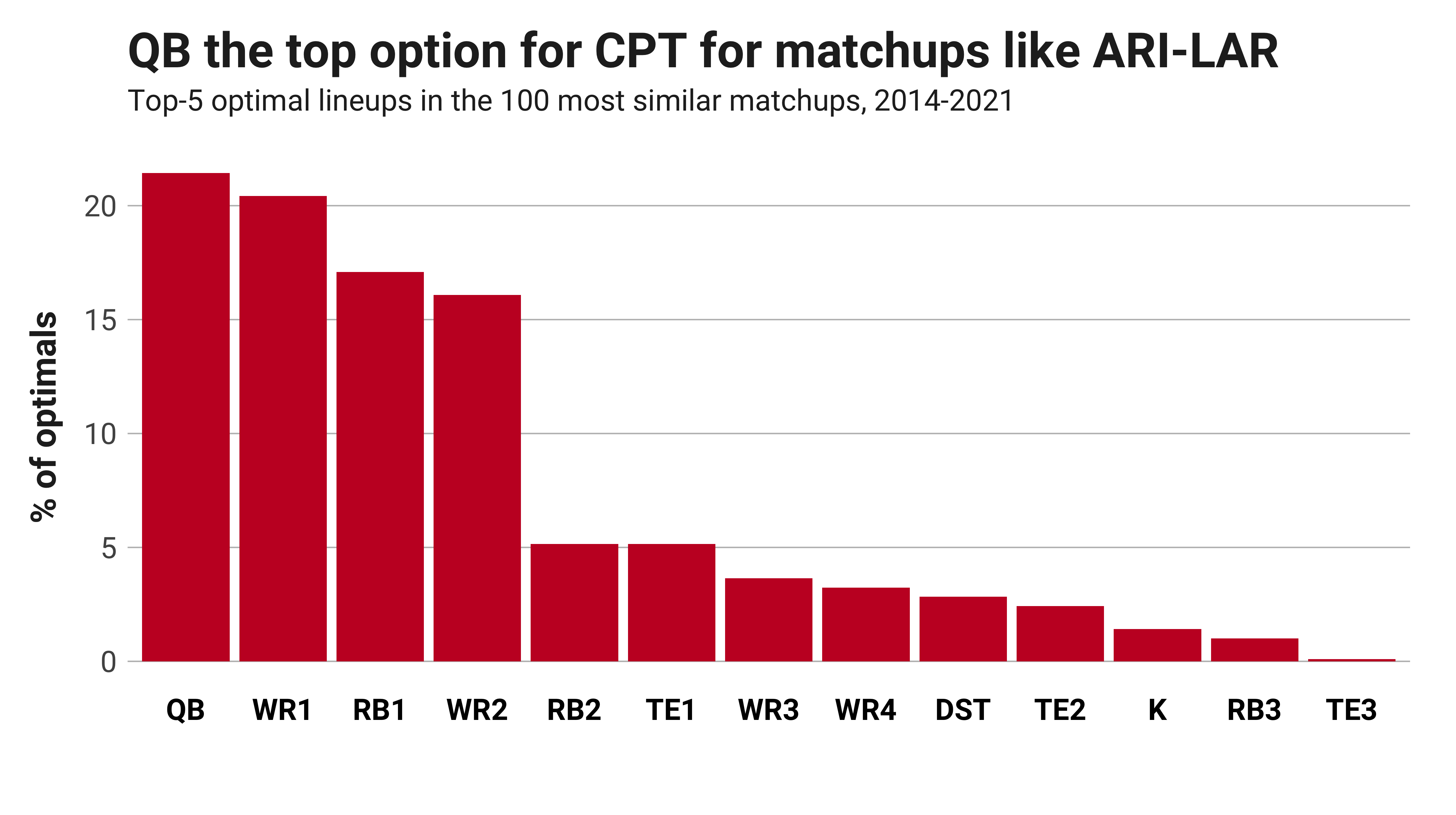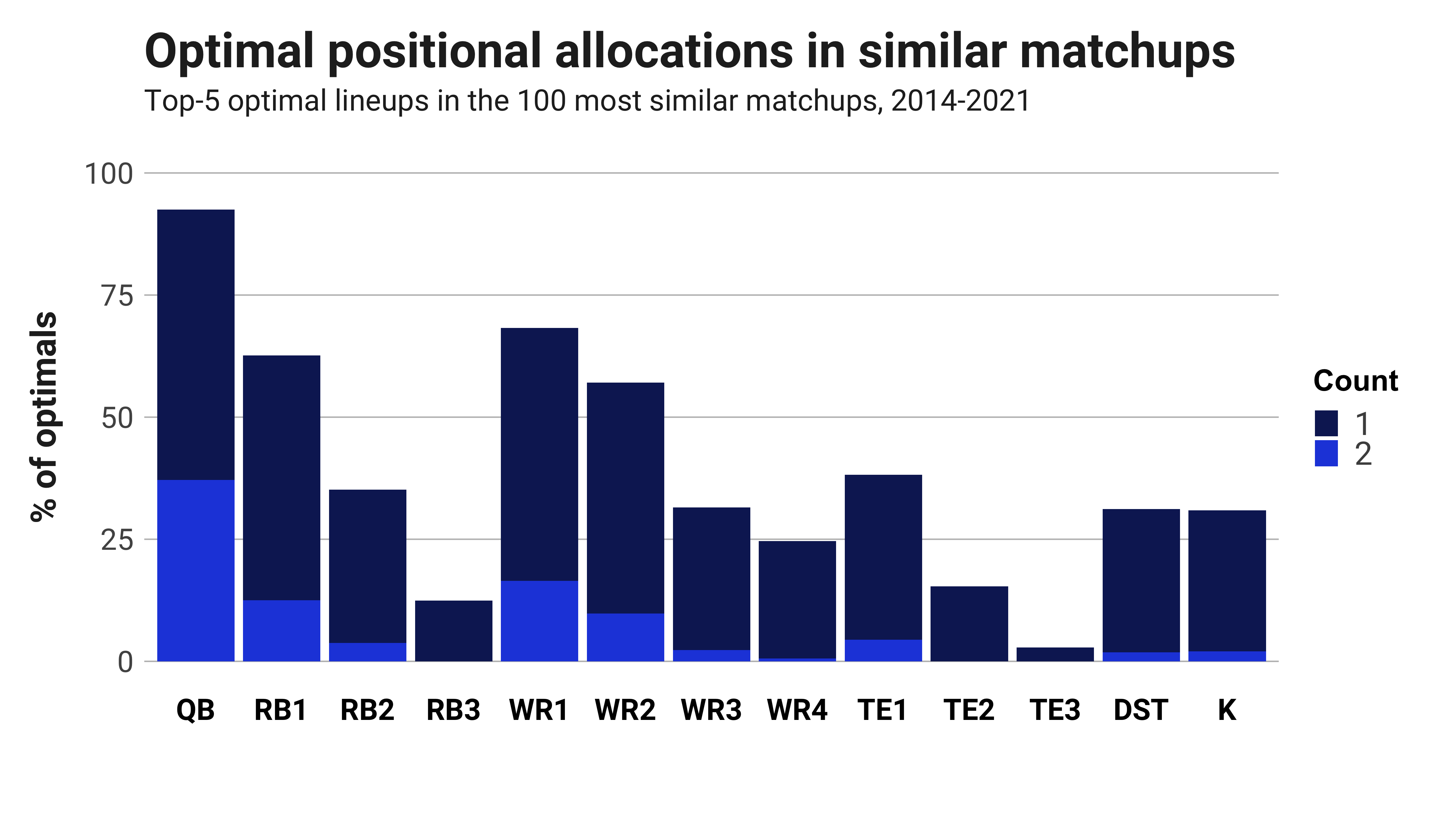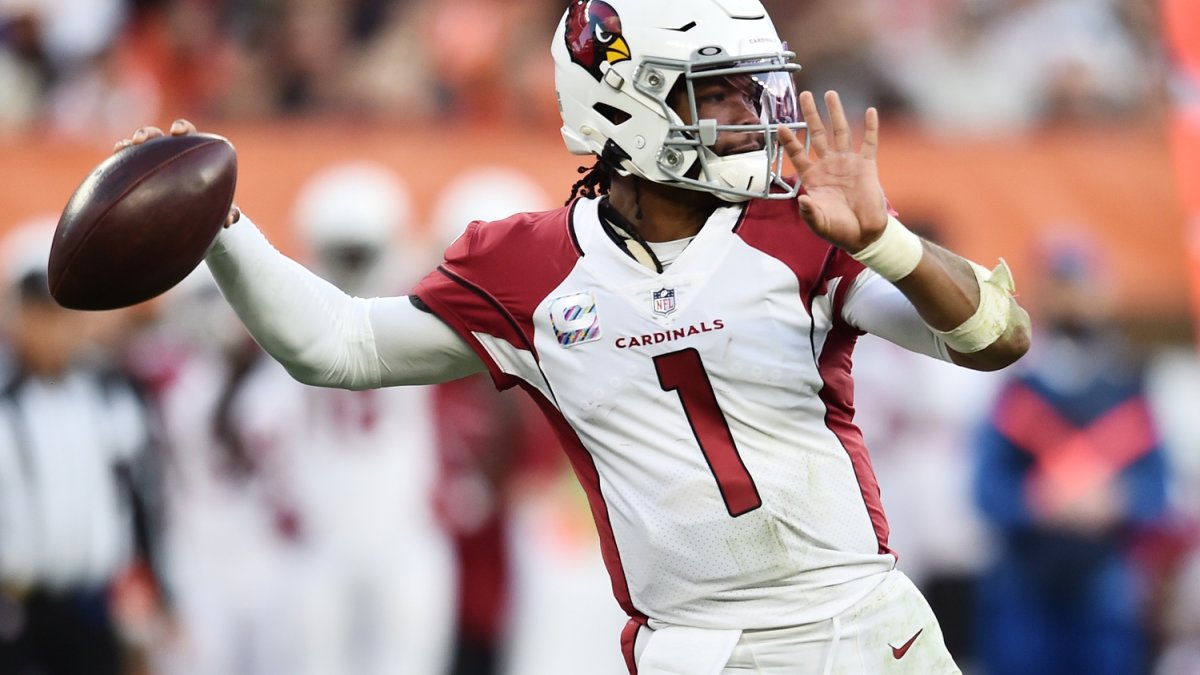The changing DFS and fantasy football landscape is shifting toward single-game contests. At DraftKings Sportsbook, the biggest is their Showdown Captain Mode format. The format blends the ease of focusing on a single game with the ability to differentiate yourself from the competition by choosing six players.
The biggest wrinkle of the format is the ability to choose one captain (CPT), who costs and is scored at 1.5 times the standard values. The CPT designation opens up another layer of strategy while exponentially increasing the number of possible lineup combinations, which is important for reducing duplicate winners and split prizes. I wrote a primer on playing this format, with details on historical positional trends and salary usage.
Click here for more PFF tools:
Rankings & Projections | WR/CB Matchup Chart | NFL & NCAA Betting Dashboards | NFL Player Props tool | NFL & NCAA Power Rankings
This season, I will analyze all of the NFL’s “island” games (TNF, SNF and MNF) and playoff matchups, utilizing PFF’s weekly projections, current betting lines, and millions of simulated historical combinations to identify the best and worst values for an upcoming matchup.
There are five main components to this Week 14 Showdown slate analysis that you’ll find below:
1. A breakdown of methodology and the most similar historical matchup to Arizona Cardinals–Los Angeles Rams as an illustration of the matching process: 2016 Week 14 Dallas Cowboys–New York Giants, featuring Dak Prescott as Kyler Murray and Eli Manning playing the role of Matthew Stafford.
2. Optimal lineup allocations (CPT and total roster) for both teams based on the results of similar historical matchups.
3. Comparison of player ownership projections for FLEX and CPT produced by a model trained on 2018-2020 Showdown contest results to optimal allocations.
4. Recent CPT ownership trends illustrated for both starting lineups.
5. A table showing the most common players on optimal lineups for each player. This lets you see which other players are commonly found on the same optimal lineups as a player you’re interested in rostering.
METHODOLOGY
To analyze this specific Showdown slate, I looked through thousands of NFL matchups from 2014 to 2021 and found the closest analogies to this contest according to the following parameters: Betting spread, over/under and average fantasy points scoring for the top-ranked positional players of both rosters (QB1, RB1, WR1, TE1).
I won’t detail every matchup that falls into the top 100 for this game, but for illustration purposes, let’s look at the most similar matchup:
| Historical | Current | ||||
| Player | Pos | Team | Player | Pos | Team |
| Dak Prescott | QB | DAL | Kyler Murray | QB | ARI |
| Ezekiel Elliott | RB | DAL | James Conner | RB | ARI |
| Dez Bryant | WR | DAL | DeAndre Hopkins | WR | ARI |
| Jason Witten | TE | DAL | Zach Ertz | TE | ARI |
| Eli Manning | QB | NYG | Matthew Stafford | QB | LAR |
| Rashad Jennings | RB | NYG | Sony Michel | RB | LAR |
| Odell Beckham Jr. | WR | NYG | Cooper Kupp | WR | LAR |
| Will Tye | TE | NYG | Kendall Blanton | TE | LAR |
The spread and over/under are similar in these matchups (Cowboys -3.5, 47 O/U versus this matchup at Cardinals -2.5, 51.5 O/U). All the players aren’t perfect matches, but that’s why we use 100 similar matchups and not just the single most similar.
The optimal roster for that historical matchup, assuming positional salaries equaled what they are for this showdown slate, would have been:
| Player | Team | Position | Roster Position | Fantasy Pts |
| Odell Beckham Jr. | NYG | WR | CPT | 19.4 |
| Terrance Williams | DAL | WR | FLEX | 18.6 |
| Giants | NYG | DST | FLEX | 15.0 |
| Ezekiel Elliott | DAL | RB | FLEX | 13.7 |
| Cowboys | DAL | DST | FLEX | 13.0 |
| Dak Prescott | DAL | QB | FLEX | 8.7 |
For this game and 99 other similar matchups, I calculated every possible combination that fits with Showdown rules (one CPT, at least one offensive player from each team) and would fall under the $50K salary threshold, assuming the salaries for the historical similar matchups are the same as those for this contest.
CHOOSING THE RIGHT CAPTAIN
The most unique part of the format, and therefore the biggest opportunity for a competitive advantage, is choosing your CPT. Should you always choose a QB who typically has the highest absolute fantasy scoring? Are defenses and kickers viable options? RB versus WR?
I went through the millions of possible lineup combinations for the 100 most similar matchups and found who the CPT selections were on the top-five scoring lineups for each matchup. Here are the 500 CPT choices from those matchups by position rank according to salary.

BREAKING DOWN TOTAL OPTIMAL ROSTERS
This graph illustrates the full range of allocations for the different positions to measure how many of the 500 optimal rosters had exactly zero, one or two of the given positions.

HISTORICAL OWNERSHIP

The boxplot above shows the ranges for CPT ownership for each starting player in contests since 2019.
Projected ownership versus optimal
This is where the analysis comes together and becomes actionable. What’s most important when viewing these numbers is to contrast them to the optimal numbers taken from the analysis above for different positions. Then, we see where the leverage may exist.
The two tables below compare the optimal allocations above, with adjustments for the personnel of this particular matchup, to our ownership projections for CPT and FLEX.
CPT



 © 2024 PFF - all rights reserved.
© 2024 PFF - all rights reserved.